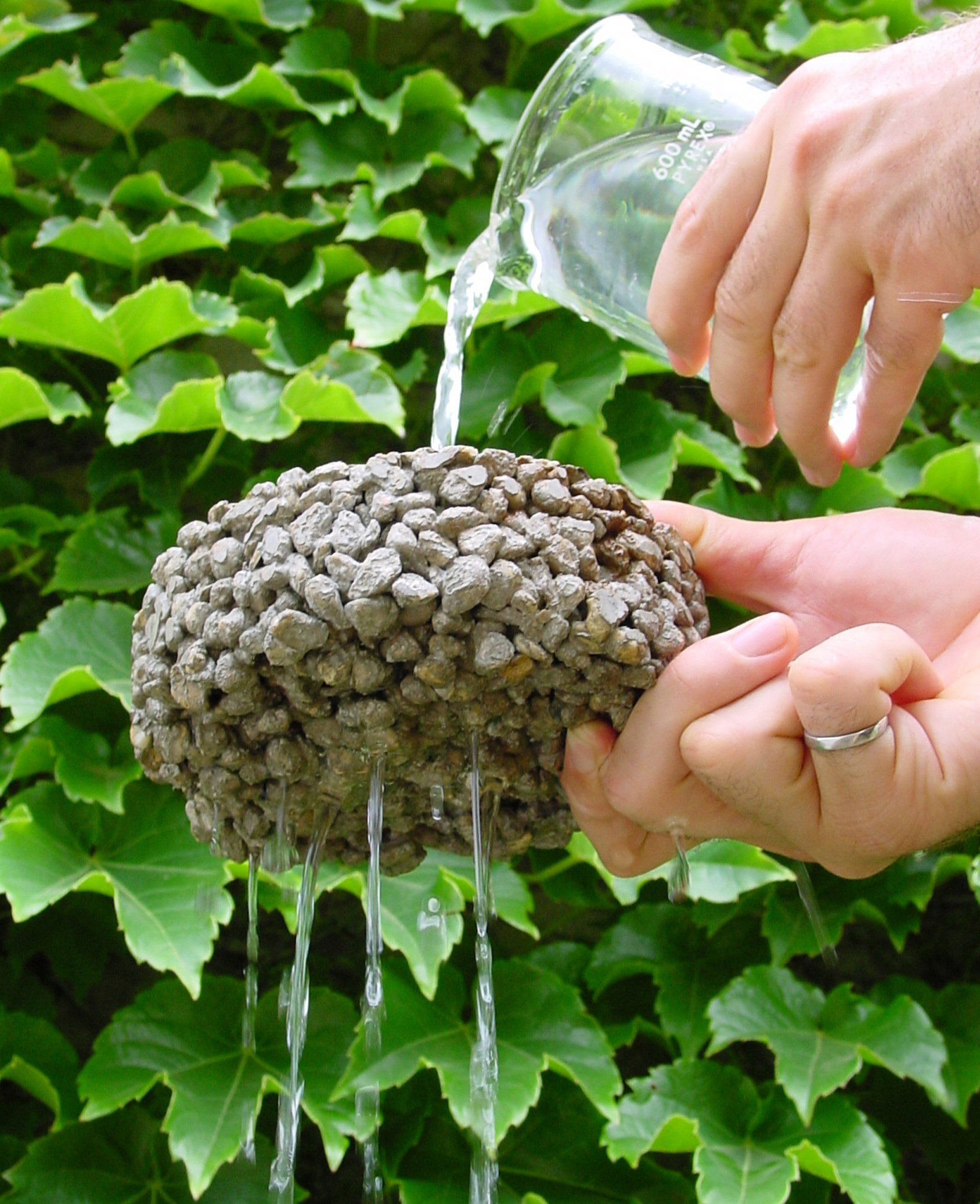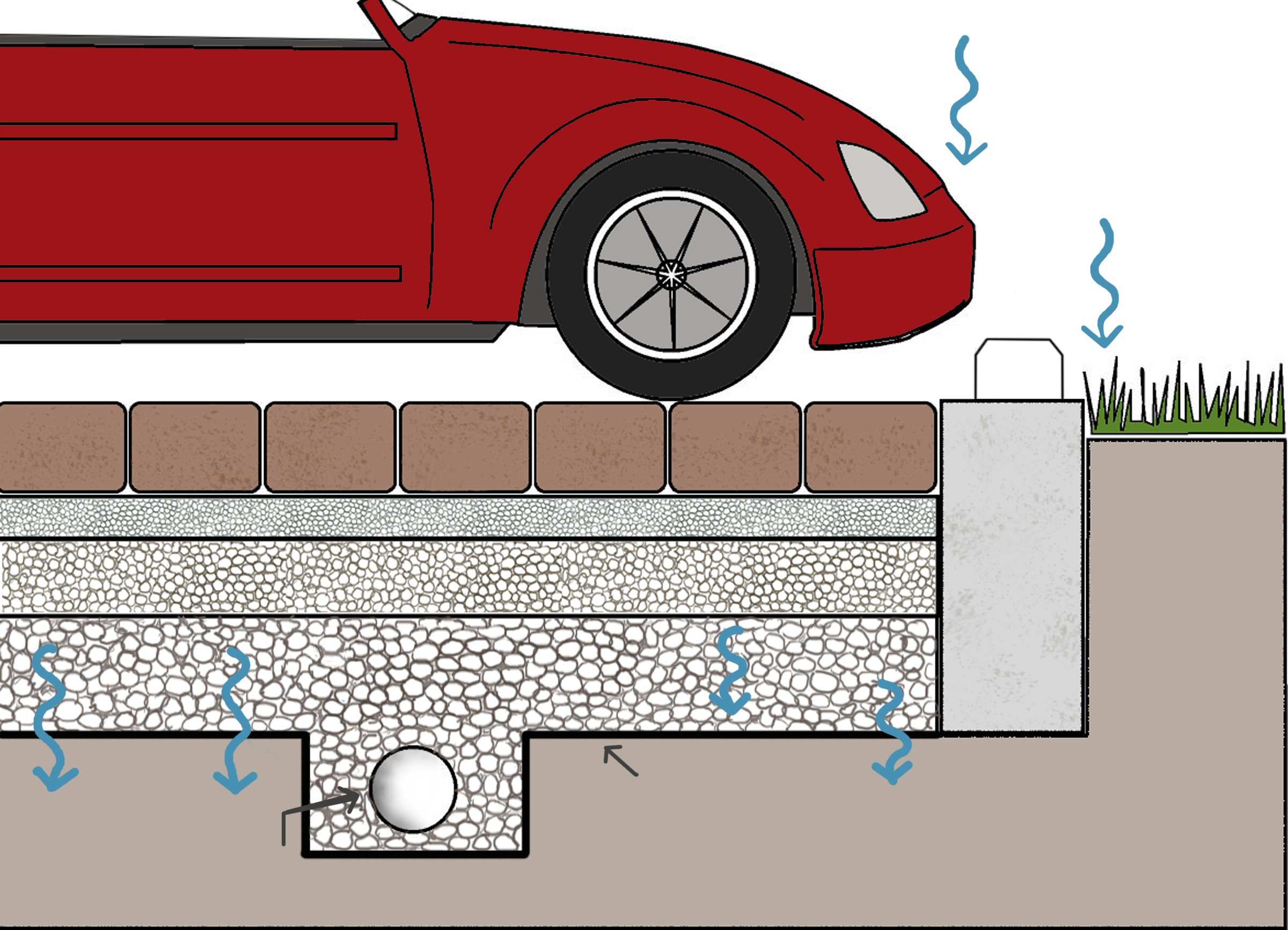Pervious Pavement
 Slows Down, Soaks In & cleans Up Stormwater Naturally
Slows Down, Soaks In & cleans Up Stormwater Naturally
View the Pervious Pavement signage installed at the reservoirs.
Rainfall and melting snow carry oils, sediments and other pollutants from impervious (non-porous) surfaces such as buildings, sidewalks, roads, driveways, parking lots and rooftops to nearly waterways.
One way to lessen the impact on our rivers and streams is to reduce the amount of impervious surface. Many alternatives provide a hard surface while allowing water to filter through and reach the underlying soil where pollutants can filter out naturally.
A parking lot (illustrated below) featuring pervious concrete and pavers, can be desinged so that regular asphalt drains towards the pervious sections, where pollutants can filter into the ground.
Water Fact: Did You Know?
Watershed health begins to decline with 10% impervious surface. 30% impervious cover shows severe impairment.

Benefits Include:
- Improves water quality
- Melts snow & drains faster
- Recharges groundwater
- Reduces heat-island effects
- Lessens downstream flooding & stream bank erosion